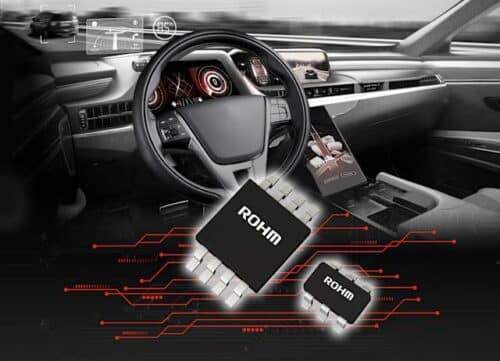The amplifiers measure current in cars, work with high and low voltages, stay accurate, handle faults, and make circuit design simple and safe.

ROHM has developed two series of current sense amplifiers for automotive applications: BD1423xFVJ-C and BD1422xG-C. Both series are qualified under the AEC-Q100 automotive standard.
Both series have integrated current sensing, combining an operational amplifier and discrete parts into one package. They use a two-stage amplifier: a chopper amplifier at the input and an auto-zero amplifier at the output. Internal resistor matching keeps gain accuracy at ±1%, even when temperature changes.
The devices can handle -14V negative input voltage, allowing back electromotive force, reverse connections, and negative inputs. They maintain sensing accuracy even when an external RC filter is used to control noise.
The BD1423xFVJ-C series supports input voltages up to +80V, used in 48V automotive systems like DC-DC converters, power supplies, auxiliary batteries, and electric compressors. The BD1422xG-C series supports input voltages up to +40V and fits into smaller spaces for automotive systems like 5V/12V power networks in body and drivetrain areas.
By combining most current sensing parts into one package, these amplifiers make circuit design simple. The two-stage amplifier improves accuracy and stability across temperatures. Support for external RC filters allows noise control without losing sensing precision, cutting design steps and saving time.
The wide negative voltage range protects circuits against faults and helps system safety. As electric vehicles and 48V systems increase, the need for accurate current monitoring grows. ROHM’s BD1423xFVJ-C and BD1422xG-C series meet this need by providing stable current sensing for both high-voltage and low-voltage automotive systems.
These amplifiers help improve system safety and operation by giving exact current measurements for system monitoring and control. Their design saves board space and makes design simple. Their features protect against voltage faults and help keep systems stable over time.








